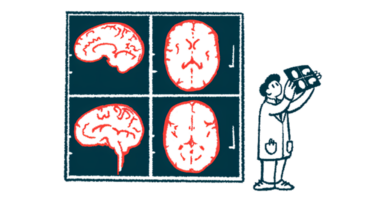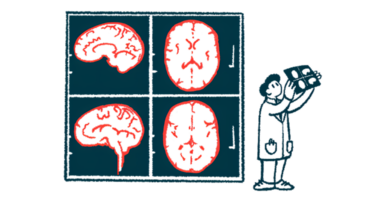Cerebellar Lesions in RRMS Linked to Worsening Manual Dexterity

The number of lesions affecting the cerebellum — a brain region responsible for coordinating voluntary movements and motor skills such as balance, coordination, and posture — predicts manual dexterity getting worse in people with relapsing-remitting multiple sclerosis (RRMS), according to a retrospective analysis.
The study, “Cerebellar pathology and disability worsening in relapsing-remitting multiple sclerosis: a retrospective analysis from the CombiRx trial,” was published in the European Journal of Neurology.
Cerebellar damage and shrinkage are valuable predictors of sustained disability in people with progressive forms of MS, but it remains unclear if cerebellar volume could be an equally useful predictor of greater disability in people with RRMS.
To find out, an international team of researchers retrospectively examined data from the CombiRx Phase 3 clinical trial (NCT00211887), which assessed a combination of interferon beta-1a (marketed as Avonex, among others) plus glatiramer acetate (sold as Copaxone and others) over three years for the treatment of RRMS.
Participants who completed the three-year randomized part could then enter the trial’s extension phase and continue receiving the combination for up to seven years.
Throughout the trial and its extension, patients underwent repeat assessments of their expanded disability status scale (EDSS) score, a measure of disability, as well as MRI scans to assess brain damage.
Researchers assessed data from 838 RRMS patients enrolled in CombiRx and its extension to determine whether cerebellar damage could predict the time to disability progression. They particularly looked for worsening of manual dexterity, assessed with the 9-hole peg test (9HPT); loss of walking abilities, determined with the T25FWT; and a confirmed disability progression on EDSS scores lasting at least six months.
Their analysis revealed that a higher cerebellar lesion load was significantly associated with a faster worsening of manual dexterity, as assessed with the nine-hole peg test (9HPT). Increased disability at the study’s start (meaning higher EDSS scores at baseline) and more lesions in other brain regions were also associated with a faster worsening seen on this test of upper-limb dexterity.
No predictive value was found for cerebellar damage and risk of greater walking disability as measured through the timed walking test or confirmed disability progression, an increase in EDSS scores that is sustained for at least six months. However, people with higher baseline EDSS scores took significantly less time to experience a worsening in walking disability or confirmed disability progression.
Older age and a greater volume of lesions outside the cerebellum were also associated with a shorter time to confirmed disability progression.
Overall, these results support the “role of cerebellar lesions as predictors of manual dexterity worsening over time,” the researchers wrote.
The findings “further underline the importance, when designing clinical trials, of an accurate selection of the candidate imaging biomarkers according to the outcome of interest,” they concluded.







